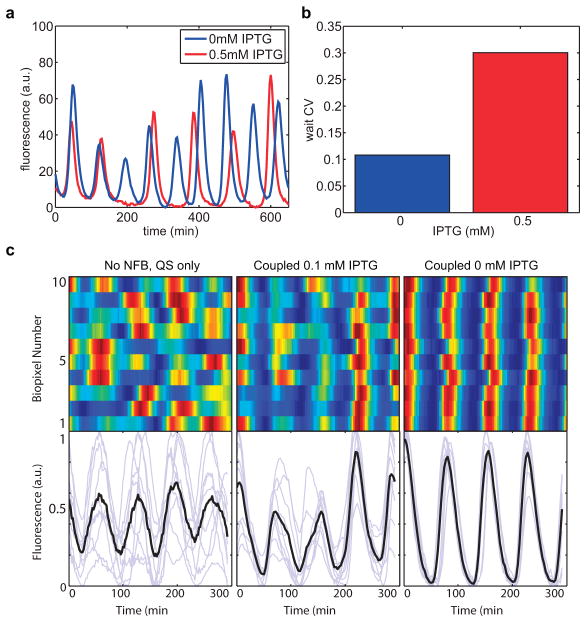Extended Data Fig. 3.
The intracellular clock increases robustness in the coupled oscillator system by reducing the period of the quorum clock. (a) Removal of IPTG, which increases intracellular clock strength, leads to more regular oscillations (experimental). (b) The decrease in variability of the inter-pulse time of the coupled oscillator without IPTG suggests that the intracellular clock plays a significant role in the inter-pulse dynamics (experimental). (c) At very high flow rate, the quorum clock oscillates irregularly. Tuning up the intracellular clock reduces the quorum clock period, restoring regular oscillations and allowing for global level synchronization between colonies due to H2O2 biopixel couping. Genetic addition of the intracellular clock (0.1mM IPTG) helps synchronize the quorum clock at high flows (430μm=s). Increasing the strength of the intracellular clock with removal of IPTG further enhances H2O2 inter-colony synchronization (experimental).

